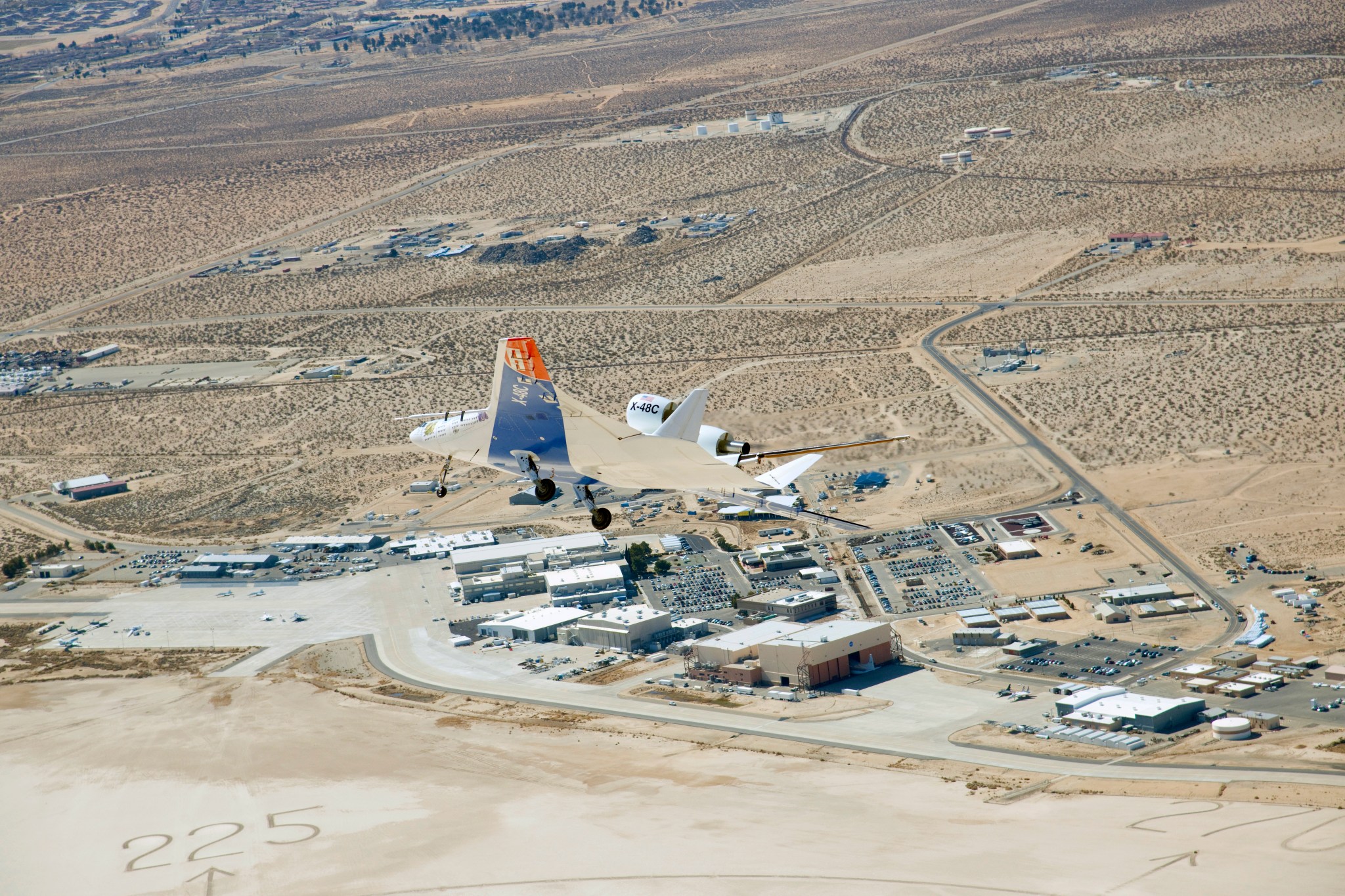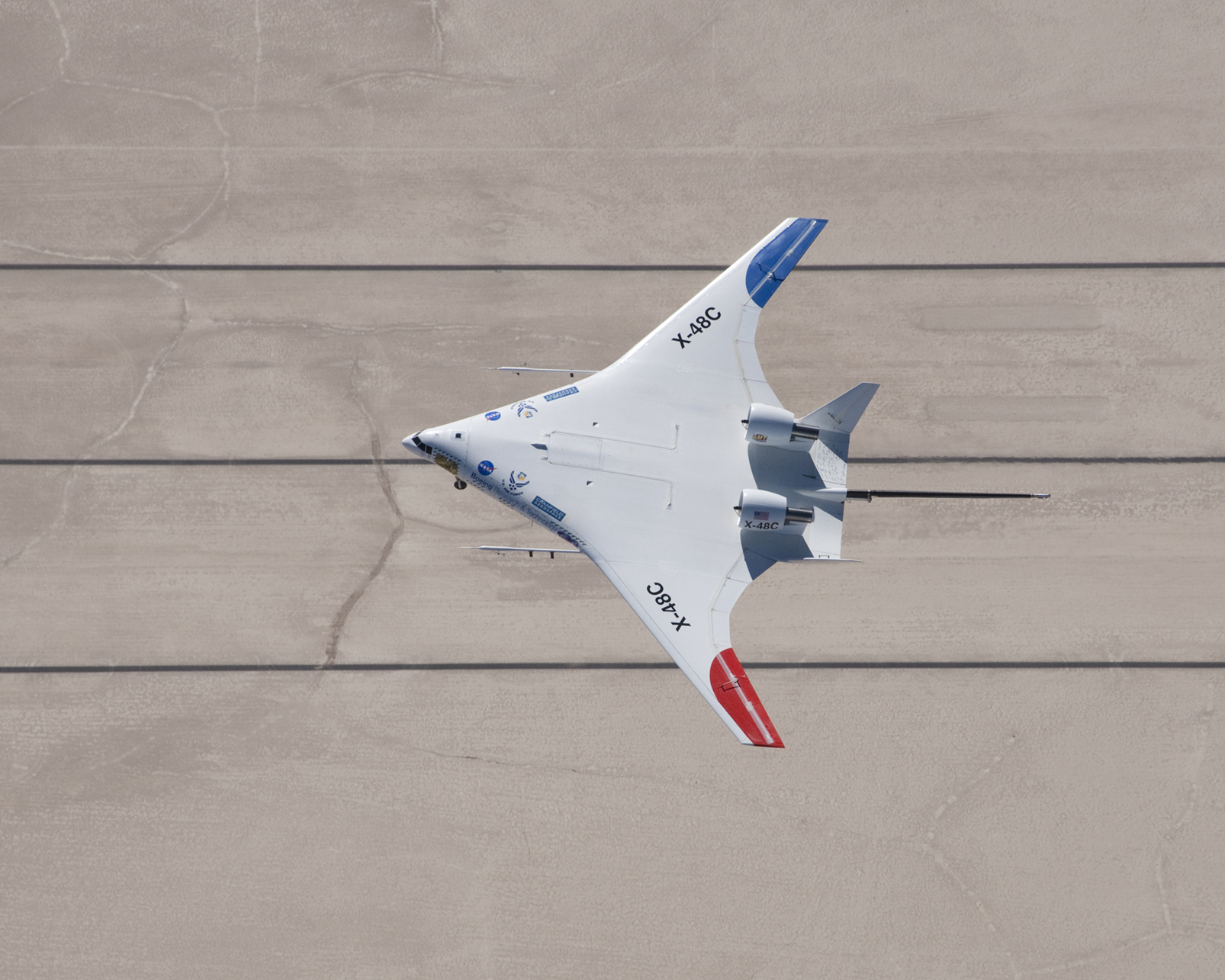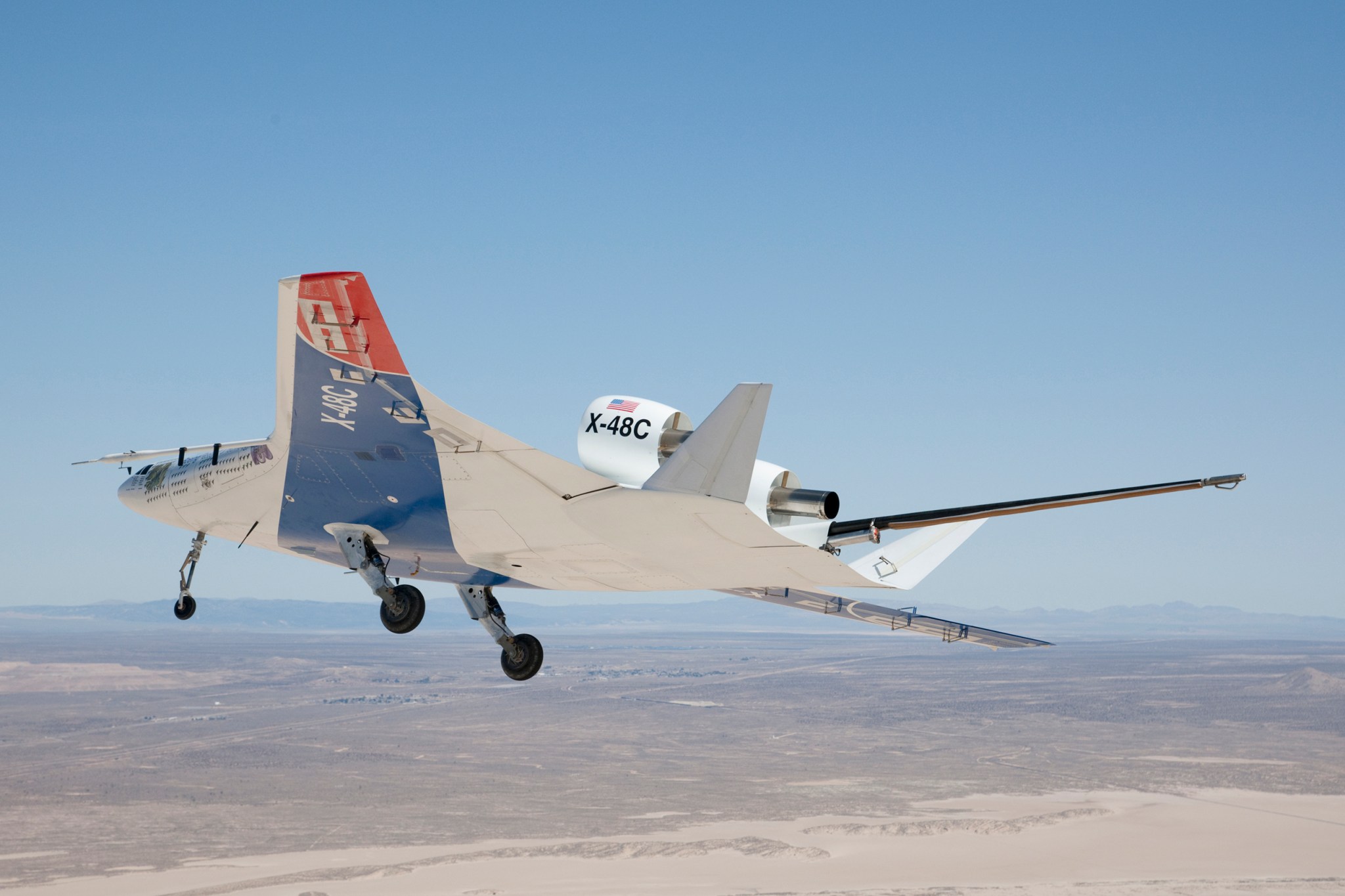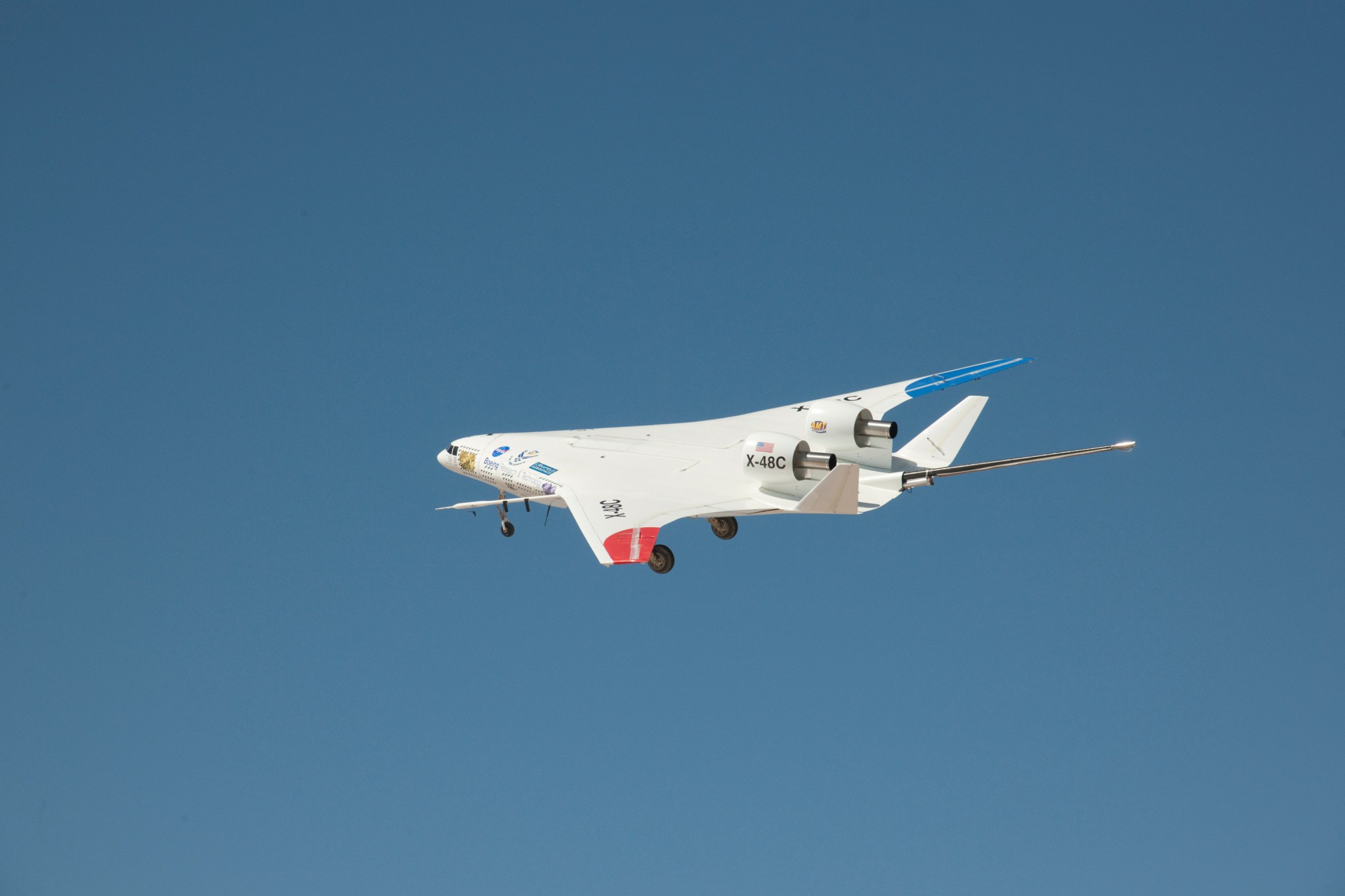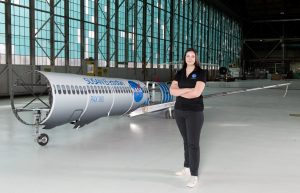All good things must come to an end, as the saying goes.
After flying the remotely-piloted X-48B and X-48C Hybrid / Blended Wing Body research aircraft for nearly six years, the joint NASA-Boeing X-48 project team recently completed a highly successful and productive flight test project at NASA’s Dryden Flight Research Center.
The manta-shaped X-48 Hybrid Wing Body technology demonstrator flew a total of 122 flights, 30 of them as the C-model. The last flight of the X-48C occurred on April 9, having first flown eight months ago on Aug. 7, 2012.
“We have accomplished our goal of establishing a ground to flight database, and proving the low speed controllability of the concept throughout the flight envelope,” said Fay Collier, manager of NASA’s Environmentally Responsible Aviation project. “Both very quiet and efficient, the hybrid wing body has shown promise for meeting all of NASA’s environmental goals for future aircraft designs,” Collier said.
The aircraft, designed by The Boeing Co. and built by Cranfield Aerospace Limited of the United Kingdom, was flown in partnership with NASA. The X-48C model, which was formerly the X-48B Blended Wing Body aircraft, was modified to evaluate the low-speed stability and control of a low-noise version of a notional, future Hybrid Wing Body (HWB) aircraft design. The HWB design stems from concept studies being conducted by NASA’s Environmentally Responsible Aviation project of future potential aircraft designs 20 years from now.
“Our team at NASA Dryden has done what we do best, flight test a unique aircraft and repeatedly collect data that will be used to design future ‘green’ airliners,” said Heather Maliska, NASA Dryden’s X-48C project manager. “It is bittersweet to see the program come to an end, but we are proud of the safe and extremely successful joint Boeing and NASA flight test program that we have conducted.”
Primary changes to the C model from the original B version that flew 92 flights at Dryden between 2007 and 2010 were geared to transforming it to an airframe noise-shielding configuration. External modifications included relocating the wingtip winglets inboard next to the engines, effectively turning them into twin tails. The aft deck of the aircraft was extended about two feet to the rear. Finally, the project team replaced the X-48B’s three 50-pound thrust jet engines with two 89-pound thrust engines.
“Our goal was to define the low-speed envelope and explore the low-speed handling qualities of the Blended Wing Body class of tailless aircraft, and we have accomplished that,” added Mike Kisska, Boeing’s X-48 flight test project manager.
The X-48C retained most dimensions of the B model, with a wingspan just longer than 20 feet, and a weight of about 500 pounds. The aircraft had an estimated top speed of about 140 mph, and a maximum altitude of 10,000 feet.
Because handling qualities of the X-48C differed from those of the X-48B, the project team modified the flight control system software, including flight control limiters to keep the airplane flying within a safe flight envelope. This enabled a stronger and safer prototype flight control system suitable for further development for potential full-scale commercial hybrid or blended wing aircraft in the future.
NASA’s Aeronautics Research Mission Directorate and Boeing funded the X-48 technology demonstration research effort, which supported NASA’s goals of reduced fuel burn, emissions and noise.
Read other features on the X-48 at:
https://www.nasa.gov/topics/aeronautics/features/bwb_main.html
View X-48 photos at:
https://www.nasa.gov/centers/dryden/multimedia/imagegallery/X-48C/index.html
https://www.nasa.gov/centers/dryden/multimedia/imagegallery/X-48B/index.html





























